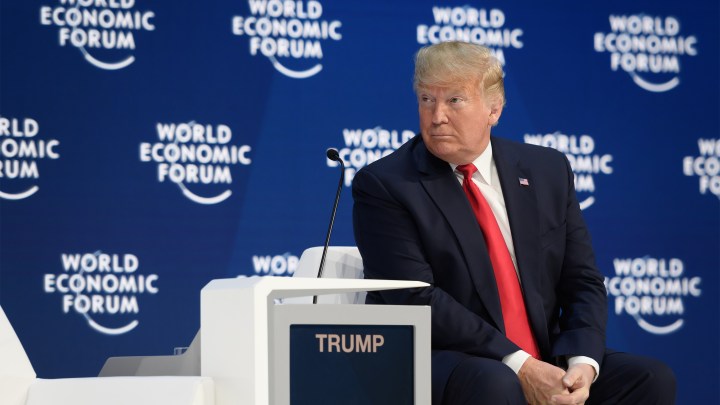
Is there really a “blue-collar boom”?

While President Trump’s lawyers are defending him in the Senate, he’s been at the World Economic Forum in Davos, Switzerland, defending his record on the economy.
In his first term, Trump has won victories with tax cuts and deregulation and pushed through two trade deals. All of which, he said Tuesday, helped juice the stock market and create a windfall for American workers. Especially, he said, the blue collar economy.
President Trump’s speech to the crowd at Davos in some ways mirrors his campaign speeches, highlighting a portion of the economy that includes some of his strongest supporters.
“Celebrating the dignity of work is a fundamental pillar of our agenda. This is a blue-collar boom,” Trump said.
Is it though? If blue collar means manufacturing — not so much.
“In 1980, 30% of the jobs in the American economy were on the factory floor — that’s now dropped to 9%,” said Anthony Carnevale, director of the Center on Education and the Workforce at Georgetown.
And the recent trade war hasn’t helped things. The Federal Reserve said the manufacturing sector was actually in a minor recession in 2019. But the president is right that the economy has been growing.
“What he’s really talking about is expansion in the service economy below the college level, not really expansion in manufacturing or production work,” Carnevale said.
A generous definition of a blue-collar worker, one inclusive of a lot of the country’s recent job growth.
“Where we’re seeing the most growth continues to be in education, in health care and leisure and hospitality, which has jobs across the income spectrum,” said Kate Bahn, director of Labor Market Policy at the Washington Center for Equitable Growth.
And even though it took almost a decade of economic recovery, low-wage workers are starting to see some raises.
“The people earning about $12 an hour have seen their wages grow by about 7% over the last year, which is more than double the economy-wide average,” said Adam Michel, a senior policy analyst at the Heritage Foundation.
There’s a lot happening in the world. Through it all, Marketplace is here for you.
You rely on Marketplace to break down the world’s events and tell you how it affects you in a fact-based, approachable way. We rely on your financial support to keep making that possible.
Your donation today powers the independent journalism that you rely on. For just $5/month, you can help sustain Marketplace so we can keep reporting on the things that matter to you.


















